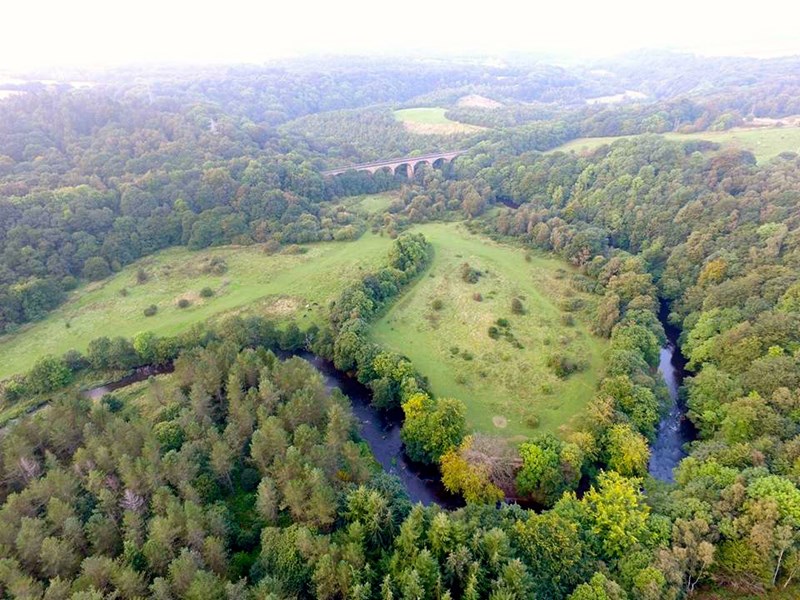The Land of Oak & Iron

The Land of Oak & Iron Landscape Partnership was formed in 2016 to conserve, enhance and celebrate the unique heritage of the Derwent Valley. Historically, the area was in north-eastern County Durham, but the modern boundaries locate part of it in rural west Gateshead and southern Northumberland.
The River Derwent flows for 35 miles, from Blanchland in County Durham to Derwenthaugh, where it enters the Tyne. The origin of the name of the river is from the Celtic word derw, meaning oak and -went, a suffix meaning river valley. At one time, Gibside estate boasted vast ancient oak forests which caused one visitor to exclaim that she expected to meet wolves! Stoney Bowes was responsible for the loss of large portions of those forests: he had them felled and tried to sell the timber. The story of Gibside's woods and woodmen forms a chapter in A People's History of Gibside.
The rich natural resources of the lower Derwent Valley made it an ideal area for developing industries, and the advent of Ambrose Crowley and his ironworks in 1691, probably sponsored by Sir William Bowes, marked the beginning of the industrial revolution in the area. The enlightened nature of the working conditions of Crowley's employees and their families had profound social repercussions that echo down the centuries. To learn all about the history of the Land of Oak & Iron, please visit the Local History Portal.
It seems to me that oak and iron are perfect metaphors for the people of this area. In My Name is Eleanor, George Bowes wishes for his daughter 'a heart of oak and a will of iron', so when I was planning a way of telling the story of Gibside from 1800 and the death of Mary Eleanor Bowes to 1872 and the creation of the Bowes Museum, it was marvellous synchronicity that I was simultaneously involved in the project. The estate workers, miners, farmers and tenants play a vital role in My Name is Eleanor, and it was always important to me to portray the lives of the people on whose efforts these great estates were built: now I was learning much more about the social history of their valley.
It soon became clear that what was going on in the Land of Oak and Iron in the C19th was far too fascinating to be kept in the background. Because the heroine of Molly Bowes is fictional, her story begins when her baby goes missing in the chaos of the Peterloo Massacre: she comes to the north-east in search of help from the powerful family to whom she believes she is related. In the wake of Peterloo, there was a large demonstration on Newcastle Town Moor: 'Crowley's Crew' were there, led by Joseph Cowen, and Molly is destined to become entangled in the radical activities of his son, the Blaydon Brick. Her story moves between the cultured world of Newcastle's artistic and literary society and the lives of the miners, ironworkers and chartists of Blaydon and Winlaton.
For the Land of Oak & Iron, I worked with another volunteer to produce a new paperback edition of the definitive work about Crowley's, Men of Iron by M.W. Flinn, which had long been out of print.
The area is rich in stories, so we followed that by making a new edition of Tales of Derwentdale including researching and writing a memoir of the extraordinary J. W. Fawcett. The book is beautifully illustrated with prints from the wondrous woodcuts of Thomas Bewick as well as photographs from Fawcett's astonishing life.
The Landscape Partnership came to an end in 2020, and out of it was born The Land of Oak & Iron Trust, to carry on the work.
And so back to Gibside: coming full circle, I brought my focus back to the history of the estate, the land, the woods, and most importantly to the working families of the estate. A People's History of Gibside is the result.